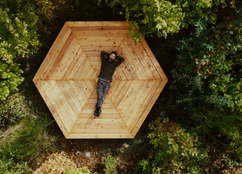
THE MIYAWAKI METHOD
Who was Akira Miyawaki?
With our association's name, we commemorate the recently deceased botanist and plant ecologist Professor Akira Miyawaki.
As early as the 1970s, Miyawaki was committed to the restoration and protection of natural forest ecosystems, which he saw as a key to maintaining the earth's natural balance. Over the course of his research, he developed, among other things, a reforestation method that is now known worldwide as the "Miyawaki method".
Until his death, he helped people in over 1,700 projects around the world to plant site-adapted and climate-resilient forests. He was directly involved in the planting of over 40 million trees. Through his tireless efforts, Miyawaki has inspired countless people. His actions show us what we can achieve as individuals when we are passionate about a cause.
What particularly impressed us, apart from the ingenious planting method, was the social level of reforestation. We are now carrying this idea forward and planting as many forests as possible together with children and other volunteers under the name "MIYA e.V.". Let's see if we can reach 40 million trees one day!

A Tiny Forest according to Miyawaki...
... is much more than "just" a tiny forest! It is a green, dense oasis that can be created on an area of just 200 square metres. Many different species of trees and shrubs grow in this urban wilderness, providing a habitat for numerous butterflies, birds and pollinating insects and creating a stable and resilient ecosystem in a very short space of time. Tiny Forests also offer people of all ages small places to meet, enjoy, learn and grow together.
And this is what a Tiny Forest does















